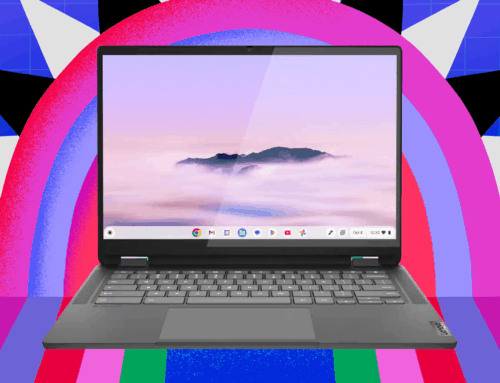Renewable energy for SMEs: solar and wind as drivers of sustainable growth
November 28, 2025
Yet energy remains a structural bottleneck across the continent: unreliable grid supply and rising costs force businesses in Nigeria, Kenya, Ghana, and beyond to rely heavily on self-generation. That burden inflates expenses, suppresses growth, and erodes competitiveness. For SMEs, this translates into reduced productivity and limited operational flexibility.
As Africa builds a more resilient economic future, renewable energy, particularly solar and wind, is emerging as a practical and commercially viable solution. Falling technology costs, combined with rising fuel prices and persistent grid gaps, are reshaping how forward-looking SMEs think about power.
The Economics of Renewable Transition
ADVERTISEMENT
Energy costs for SMEs are far more than a line item; they shape pricing, profitability, and investment decisions.
Across the continent, businesses relying on diesel or petrol generators face expenses many times higher than grid electricity, creating relentless operational pressure. This strain forces entrepreneurs to weigh every decision carefully, from pricing to staffing, highlighting how critical reliable, affordable energy has become.
At the same time, the cost of renewable energy, particularly solar PV, has plummeted over the past decade. According to the International Renewable Energy Agency (IRENA), solar PV is now one of the most affordable power sources globally, making it an increasingly attractive way for SMEs to stabilize operations and hedge against fuel volatility. What was once primarily an environmental choice has become a strategic business imperative, offering lower operating costs, greater predictability, and improved long-term competitiveness.
When SMEs consider renewables, the economic rationale is clear: lower operating costs, greater predictability, reduced exposure to fuel disruptions, and improved long-term competitiveness.
Solar: The Most Practical Entry Point
ADVERTISEMENT
Solar offers SMEs one of the easiest paths to decentralized, reliable energy. It is modular, quick to deploy, and adaptable to a wide range of businesses, from retail outlets and agricultural processors to tech firms, health facilities, and manufacturing workshops. Its strength lies in scalability: This means that SMEs can start with basic systems and expand as operations grow.
Several African countries illustrate this practicality. Kenya’s thriving solar home system market, one of the most mature in the world, has enabled thousands of small businesses to operate longer hours at lower energy costs. In Nigeria, commercial-scale solar for SMEs has gained momentum, particularly among clinics, cold-chain operators, food processors, and corporate facilities seeking predictable power.
Solar does not eliminate the need for grid or backup power, but meaningfully reduces reliance on expensive self-generation. For many SMEs, hybrid solutions combining solar, batteries, and limited generator use offer the best balance of reliability and cost.
Wind Power’s Role in Industrial Growth
While solar dominates the conversation for SMEs, wind energy has a distinct and growing role in Africa’s industrial and coastal economies. Countries like Morocco, Egypt, South Africa, and Kenya have shown that large-scale wind infrastructure can lower industrial power costs, diversify generation, and improve energy security.
ADVERTISEMENT
Wind is particularly suitable for industrial parks, manufacturing clusters, agribusiness zones, and coastal SMEs near high-wind corridors. Although not every region in Nigeria or West Africa has the wind profile necessary for commercial turbines, some coastal areas remain under-explored. For larger SMEs with higher load requirements, wind combined with solar can provide a more stable generation profile than solar alone.
Closing the Financing Gap
Despite the economic case for renewables, financing remains a major constraint. Upfront costs, even though falling, can still be prohibitive for SMEs operating on thin margins. Innovative financing models are changing this landscape.
Pay-as-you-go systems, energy-as-a-service contracts, and lease-to-own models allow SMEs to access solar with minimal upfront investment. Development finance institutions and commercial banks increasingly offer renewable-focused credit lines, often supported by risk-sharing facilities from the AfDB, IFC, and regional banks.
The challenge is not technology; it is ensuring SMEs have access to financing structures aligned with their cash flow realities. East Africa’s progress shows that when these structures exist, adoption accelerates rapidly.
ADVERTISEMENT
A Strategic Payoff for the Continent
Renewables offer SMEs more than cost savings. They enhance operational resilience, reduce downtime, and enable longer service hours. In a continent where small businesses employ more than 80% of the workforce and contribute significantly to GDP, improving energy reliability has broad economic implications.
As Africa integrates more deeply into global supply chains, energy reliability becomes a differentiator. SMEs that transition to renewable energy today will be better positioned to grow, scale, and compete. In the long run, the continent will be better equipped to build a more resilient and sustainable future.
Ayuba Sanusi is an accomplished energy expert with deep experience across the renewable and natural gas sectors. Driven by a commitment to sustainability, he champions innovative approaches that enhance energy efficiency and support the transition to a cleaner global energy system.
#FeaturedPost
Search
RECENT PRESS RELEASES
Related Post




